Samsung Galaxy S7 vs. LG G5 vs. Apple iPhone 6s: Which smartphone is top dog now?

Announced at last month’s Mobile World Congress 2016, Samsung’s Galaxy S7 and LG’s G5 both go on sale later this month. Both pack some truly impressive new features. And, for many potential buyers, the biggest question about both is, “How do they stack up against the iPhone 6s?”
We’ve been wondering the same thing ourselves. So we’ve compared the most important features of each phone to see if one stands out from the pack. And don’t forget to stay tuned for our full reviews of the S7 and G5 in the coming weeks.
Size and weight
Samsung Galaxy S7: Just as it did with the Galaxy S6, Samsung is offering its latest handset in two distinct form factors: the standard Galaxy S7 and the larger Galaxy S7 Edge. The S7 sports a 5.1-inch display, while the Edge has a larger 5.5-inch curved screen that bends around the phone’s left and right sides.
The S7 measures 5.6 x 2.7 x 0.31 inches and weighs 5.4 ounces. The taller Galaxy S7 Edge, on the other hand, measures 5.9 x 2.9 x 0.30 inches and weighs 5.5 ounces.
LG G5: At 5.3 inches, the LG G5’s display is larger than the Galaxy S7’s but smaller than the S7 Edge’s. Surprisingly, though, the G5 is nearly identical to the larger S7 Edge in terms of overall dimensions and is just an ounce heavier.

Apple iPhone 6s: Apple’s 4.7-inch iPhone 6s is the smallest handset of the three. Measuring 5.4 x 2.6 x 0.28 inches and weighing 5.0 ounces, the 6s is positively svelte by comparison. The 5.5-inch iPhone 6s Plus, on the other hand, is a relative behemoth. Measuring 6.2 x 3.1 x 0.29 inches and weighing 6.8 ounces, the iPhone 6s Plus is the largest of these phones.
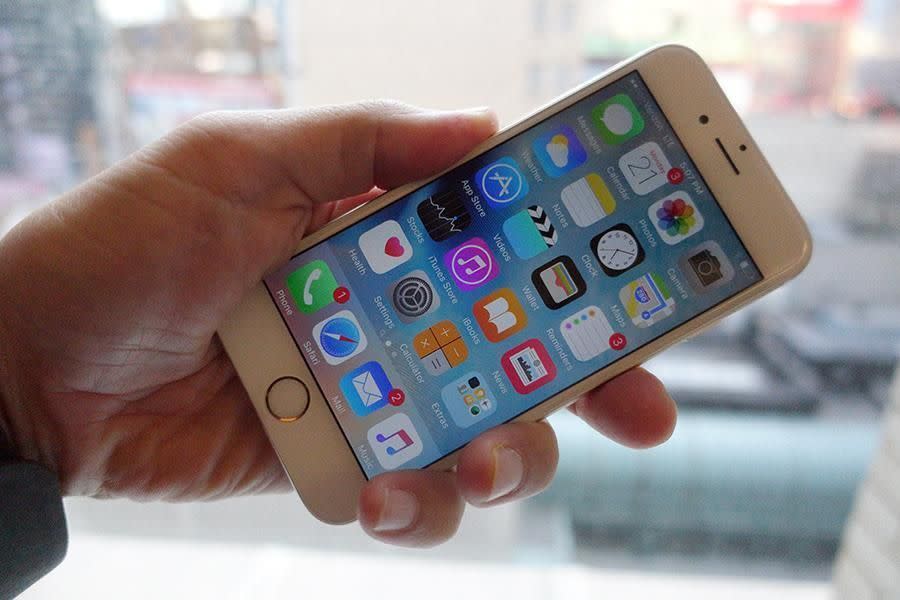
The takeaway: The iPhone 6s is a hair thinner and shorter. But proportionally the Galaxy S7 packs more display into its frame than the others.
Case design
Samsung Galaxy S7: Both the S7 and S7 Edge are built around metal alloy frames with contoured glass-coated rear panels that make the phones nice and comfortable to hold. And compared to its previous generation, Samsung has also reduced the size of the camera bulges on the back of its handsets.
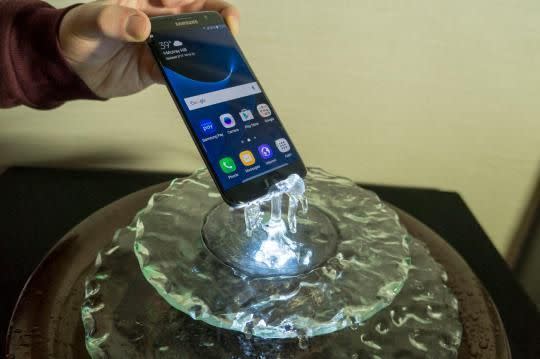
But the biggest improvement to the Galaxy S7 and Galaxy S7 Edge is their new waterproof bodies. You can dunk these phones in up to five feet of water for 30 minutes and they’ll keep on ticking without an issue.
LG G5: Like the Galaxy S7 and S7 Edge, LG’s G5 comes wrapped in a metal body. On the G5’s back panel, you’ll find its unique dual-lens camera: one is wide-angle, the other is for normal shots. Below the cameras, you’ll find the G5’s fingerprint sensor, whereas both Samsung and Apple put their fingerprint sensors on their phones’ Home buttons.
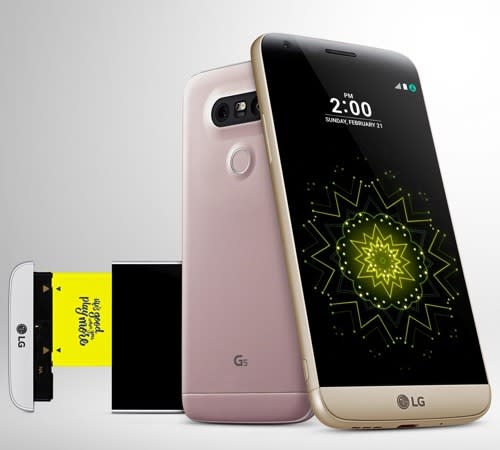
But what really sets the G5 apart from its competitors is its modular design. By pulling on the bottom of the phone, you can remove its expansion slot to quickly switch out its removable battery. You can also use the slot to add a camera module to the handset that gives you a better grip and physical camera buttons, as well as an audio module for high-definition sound.
Apple iPhone 6s: Apple’s iPhone 6s and 6s Plus look exactly like the iPhone 6 and 6 Plus. They’re both made of metal and glass and are incredibly thin. But, beyond the fact that Apple says the phones are sturdier than their predecessors, thanks to a new aluminum frame and more durable glass, in terms of design neither phone is particularly notable.
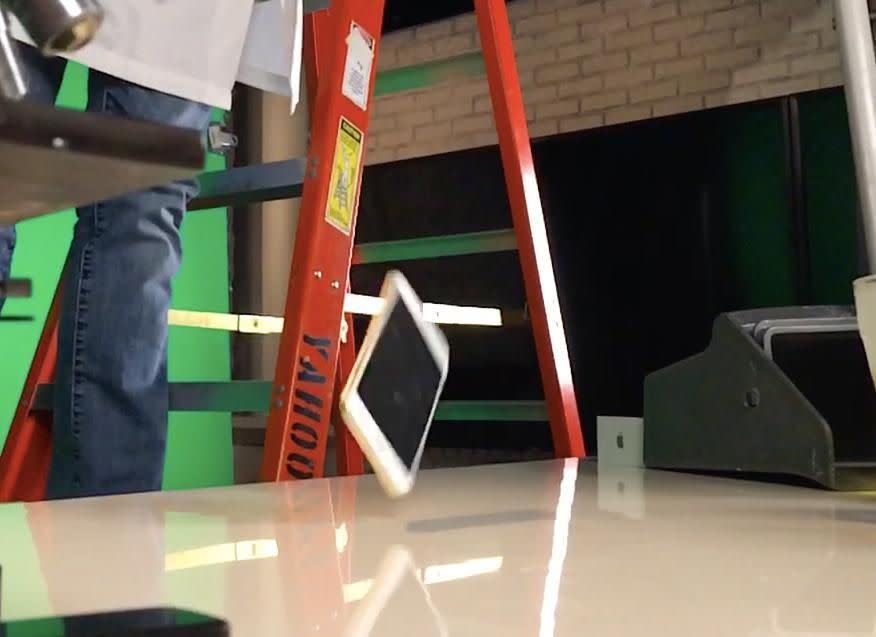
The takeaway: The Galaxy S7 and S7 Edge are impressive simply because they’re waterproof, and the iPhone 6s gets some points for its slim figure. But with its modular design, the LG G5 has some really interesting potential.
Screen
Samsung Galaxy S7: The Galaxy S7′s 5.1-inch screen and the the S7 Edge’s 5.5-inch glass both offer 2560 x 1440 resolution using Super AMOLED display technology. (Super AMOLED, or active matrix of organic light-emitting diodes, displays produce vibrant colors and deep blacks, so images and videos look incredibly rich.)

As noted, the S7 Edge’s screen features those curved edges that wrap around the phone’s left and right sides. The benefit is that you can swipe in from either side to pull up things like your favorite apps, news briefs, and frequent contacts. Sure, it’s mostly a gimmick, but it’s a cool one.
LG G5: The LG G5′s 5.3-inch display provides 2560 x 1440 resolution using an LCD screen. LCDs generally offer more natural looking colors than AMOLEDs, which can make colors look oversaturated.

On the flip side, LCD displays are theoretically harder on your phone’s battery: While AMOLED panels can simply turn off individual pixels to produce blacks, LCD screens must keep all of their pixels lit — even when displaying blacks.
Apple iPhone 6s: The iPhone 6s’s 4.7-inch screen offers a resolution of 1344 x 750 pixels, while the larger iPhone 6s Plus supports 1920 x 1280 pixels, both using Apple’s Retina HD display technology. Apple’s displays are LCDs, which (like the LG G5′s) offer natural colors but also potentially shorter battery life.
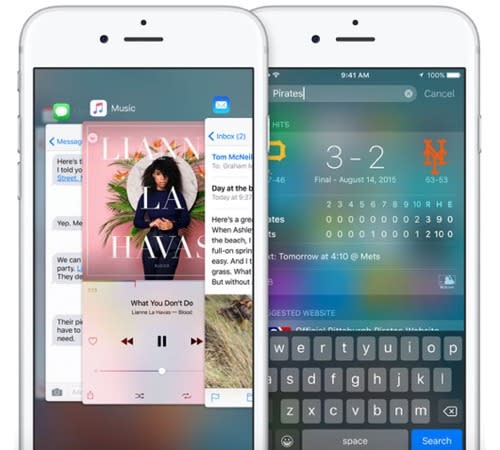
The takeaway: When it comes to screens, you really have to see them in person before you can pass judgment. So until we have the chance to set up all three smartphones next to each other and compare them side by side, we’ll call this round a tie.
Camera
Samsung Galaxy S7: With the Galaxy S7 and the S7 Edge, Samsung has cut back on the number of megapixels its cameras capture, from 16 to 12. While that might sound like a downgrade, the company has actually increased the size of the pixels its smartphone cameras capture. As a result, Samsung claims the images its handsets’ cameras capture will be clearer overall, especially in low-light situations.

The phones also have new “dual photodiode” pixels, which allow the S7 and S7 Edge’s cameras to focus faster than their competitors.
LG G5: The LG G5 enters this particular battle with a unique advantage. Rather than relying on a single lens, the G5 has two lenses on its back panel: One 16-megapixel lens is designed for normal photos, while the second 8-megapixel lens is meant for wide-angle shots.
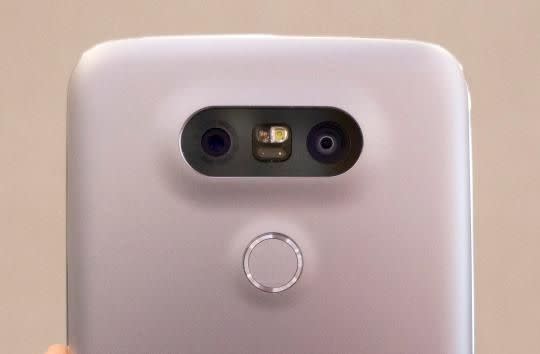
LG says the wide-angle lens can capture images up to 1.7 times wider than traditional smartphone cameras, making it easier to take pictures of large groups, expansive landscapes, and tall buildings.
Apple iPhone 6s: Like the Galaxy S7, Apple’s iPhone 6s and 6s Plus sport 12-megapixel cameras. And while those were upgraded from the iPhone 6 and 6 Plus’ 8-megapixel cameras, they don’t really change much in terms of image quality. That’s not necessarily a bad thing, though, because the iPhone 6’s cameras were already among the best.

One clear differentiator: While both the S7 and S7 Edge offer optical image stabilization, ensuring photos come out clear even if your hand is shaking; the iPhone 6s doesn’t. To get that feature, you have to go with the iPhone 6s Plus.
The takeaway: LG’s decision to equip its phone with two different lenses for different occasions is an interesting one, and the iPhone 6s and 6s Plus cameras are undeniably fantastic. But the Galaxy S7 and S7 Edge, with their larger megapixels and faster focusing speeds, would seem to have an advantage over both. But, again, we’ll have to do some hands-on testing to confirm what the specs tell us.
Battery
Samsung Galaxy S7: The Galaxy S7 comes with a 3,000-mAh battery, while the larger Galaxy S7 Edge comes with a higher-capacity 3,600-mAh energy source. Both of those power plants are bigger than the batteries in either the Galaxy S6 or S6 Edge, and they should get you through the entire day without needing a recharge.
That said, the S7 and S7 Edge’s batteries aren’t removable, which might be a deal-killer for power users who want to be able to swap out their smartphone batteries in the middle of a long day.
LG G5: LG’s G5 comes equipped with a 2,800-mAh battery — a bit smaller than the Galaxy S7s 3,000-mAh unit. Whether that translates into an appreciable difference in battery life remains to be seen.
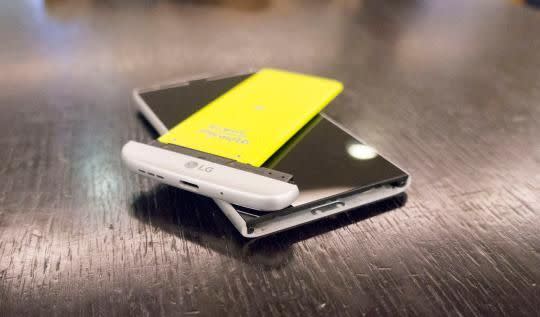
The G5′s battery is, however, completely removable; neither the Galaxy S7 nor the iPhone can match that. That’s potentially huge for people who chew through their batteries (playing games or videos, for example). If you’ve ever been on a long flight watching your phone’s battery gauge inching inexorably toward zero, you can appreciate how helpful a removable battery could be.
Apple iPhone 6s: The batteries in the iPhone 6s and 6s Plus are similar to those in their predecessors. That’s not a bad thing, though, as the iPhone can reliably last all day on a single charge without issue.
The takeaway: Swappable batteries have been on the wish lists of smartphone buyers for years, so this round goes to the G5.
Software
Galaxy S7: Samsung’s Galaxy S7 and S7 Edge come loaded with Google’s Android 6.0 Marshmallow operating system, which includes Google Now on Tap and finer app permission controls.
Both versions of the S7 also come with Samsung’s TouchWiz skin. TouchWiz is Samsung’s way of putting its personal stamp on Android. It does this by tweaking the interface a bit and creating its own fonts and icons.
In previous years, TouchWiz was horribly overbearing and constantly issued annoying prompts and warnings. But with the Galaxy S6, the company significantly toned down its software to the point where it’s finally bearable. Still, I personally prefer basic Android to skins like TouchWiz.
LG G5: LG’s G5, like the Galaxy S7, runs on Android Marshmallow and features LG’s own modified interface. LG’s skin is similarly unobtrusive and provides some additional functionality over traditional Android.
But, again, I’ll always prefer pure Android, in large part because skins like Samsung’s and LG’s prevent you from getting the latest Android updates when Google makes them available. Instead, you’ll have to wait for LG and Samsung to make sure their skins play nice with Google’s new software and then send out updates of their own. It’s seriously annoying.
Apple iPhone 6s: It should come as no surprise that Apple’s iPhone 6s and 6s Plus come with the latest version of the company’s iOS mobile operating system, iOS 9. Unlike Samsung and LG’s Android skins, you can download updates to Apple’s iOS as soon as they are available, which can be a major benefit for handset owners.
In general, you’re not going to find many differences in terms of features between Google’s Android and Apple’s iOS. You will, however, still find a difference in apps between Android and iOS. That’s because developers still tend to release their apps for iOS before they release the same apps for Android.
Takeaway: This really comes down to your personal preferences. As I said, there isn’t much difference between Android and iOS in terms of features. But if you’re the kind of person who wants the newest apps as soon as they come out, you’ll want to go with the iPhone and iOS.
The bottom line
So which of these handsets should you go for? Well, it’s still too early to tell for sure, but based on the specs we looked at it, the Galaxy S7 seems to have an early lead, thanks largely to the fact that it’s waterproof, expandable, and has a top-notch camera.
Still, we’ll have to wait until we can fully review the LG G5, Galaxy S7 and S7 Edge before we make our final call. Stay tuned.
Email Daniel at dhowley@yahoo-inc.com; follow him on Twitter at @DanielHowley.

